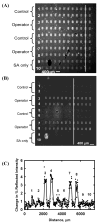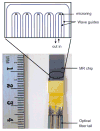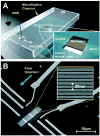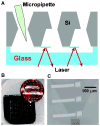Label-free technologies for quantitative multiparameter biological analysis
- PMID: 19221722
- PMCID: PMC2667559
- DOI: 10.1007/s00216-009-2637-8
Label-free technologies for quantitative multiparameter biological analysis
Abstract
In the postgenomic era, information is king and information-rich technologies are critically important drivers in both fundamental biology and medicine. It is now known that single-parameter measurements provide only limited detail and that quantitation of multiple biomolecular signatures can more fully illuminate complex biological function. Label-free technologies have recently attracted significant interest for sensitive and quantitative multiparameter analysis of biological systems. There are several different classes of label-free sensors that are currently being developed both in academia and in industry. In this critical review, we highlight, compare, and contrast some of the more promising approaches. We describe the fundamental principles of these different methods and discuss advantages and disadvantages that might potentially help one in selecting the appropriate technology for a given bioanalytical application.
Figures









References
Publication types
MeSH terms
Substances
Grants and funding
LinkOut - more resources
Full Text Sources
Other Literature Sources

